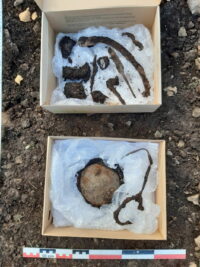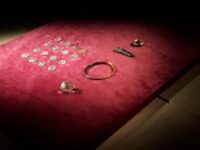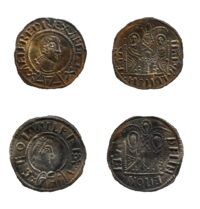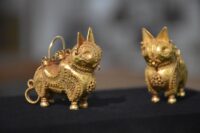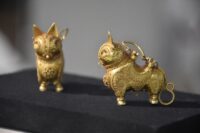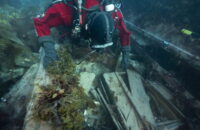 After two years on hold due to COVID-19, the excavation of Captain John Franklin’s ill-fated flagship, HMS Erebus, picked up again this year, providing new insights into the lives of the 129 crew who died in the doomed 1845 expedition to find the elusive Northwest Passage. This year’s field work by Parks Canada’s underwater archaeologists and the Nattilik Heritage Society’s Inuit Guardians explored what is believed to be Second Lieutenant Henry Thomas Dundas le Vesconte’s cabin and continued the excavation of the Third Lieutenant’s cabin and the Captain’s Steward’s pantry.
After two years on hold due to COVID-19, the excavation of Captain John Franklin’s ill-fated flagship, HMS Erebus, picked up again this year, providing new insights into the lives of the 129 crew who died in the doomed 1845 expedition to find the elusive Northwest Passage. This year’s field work by Parks Canada’s underwater archaeologists and the Nattilik Heritage Society’s Inuit Guardians explored what is believed to be Second Lieutenant Henry Thomas Dundas le Vesconte’s cabin and continued the excavation of the Third Lieutenant’s cabin and the Captain’s Steward’s pantry.
 In April and May, archaeologists and Guardians established an ice camp and used a remotely operated vehicle to collect images and data of the ship 36 feet under the surface. Then in September the team explored the site in person. Over the source of 11 days, the team made 56 individual dives of about two hours each, recovering 275 artifacts from the wreck, including a lens from a pair of glasses, tableware complete with platters and serving dishes, epaulettes from an lieutenant’s uniform still in their box and a green box containing a set of drafting implements, part of the map-making kit of the Second Lieutenant. The stand-out find, however, is a leather-bound notebook that could contain invaluable records of the voyage.
In April and May, archaeologists and Guardians established an ice camp and used a remotely operated vehicle to collect images and data of the ship 36 feet under the surface. Then in September the team explored the site in person. Over the source of 11 days, the team made 56 individual dives of about two hours each, recovering 275 artifacts from the wreck, including a lens from a pair of glasses, tableware complete with platters and serving dishes, epaulettes from an lieutenant’s uniform still in their box and a green box containing a set of drafting implements, part of the map-making kit of the Second Lieutenant. The stand-out find, however, is a leather-bound notebook that could contain invaluable records of the voyage.
“It’s probably the most remarkable find of the summer,” said [Ryan] Harris, one of the Parks Canada team of archaeologist divers who have been excavating Franklin’s two lost ships since they were found under the Arctic seas.
“We came across a folio — a leather book cover, beautifully embossed — with pages inside. It actually has the feather quill pen still tucked inside the cover like a journal that you might write in and put on your bedside table before turning in.”
Maybe it’s just an inventory of stores or someone’s laundry list. It was found in the pantry. Or maybe it’s more.
“We’re quite excited at the tantalizing possibility that this artifact might have written materials inside,” Harris said. “It’s being analyzed in the lab now.”
The leather folio first emerged when Ryan was dredging the sediment off the wreck. He saw the pages wafting in the water and stopped immediately. It is so delicate and precious that he excavated it with a spoon.
The exploration of Erebus is still in the early stages, with only a few square feet of the wreck explored thus far. And that’s the easy one! Franklin’s other ship, HMS Terror, commanded by Captain Francis Crozier is twice as deep under the icy waters of the aptly named Terror Bay. Its depth actually keeps it safer from the elements than Erebus, so for now the focus is on monitoring, excavating and conserving the more exposed wreck.


